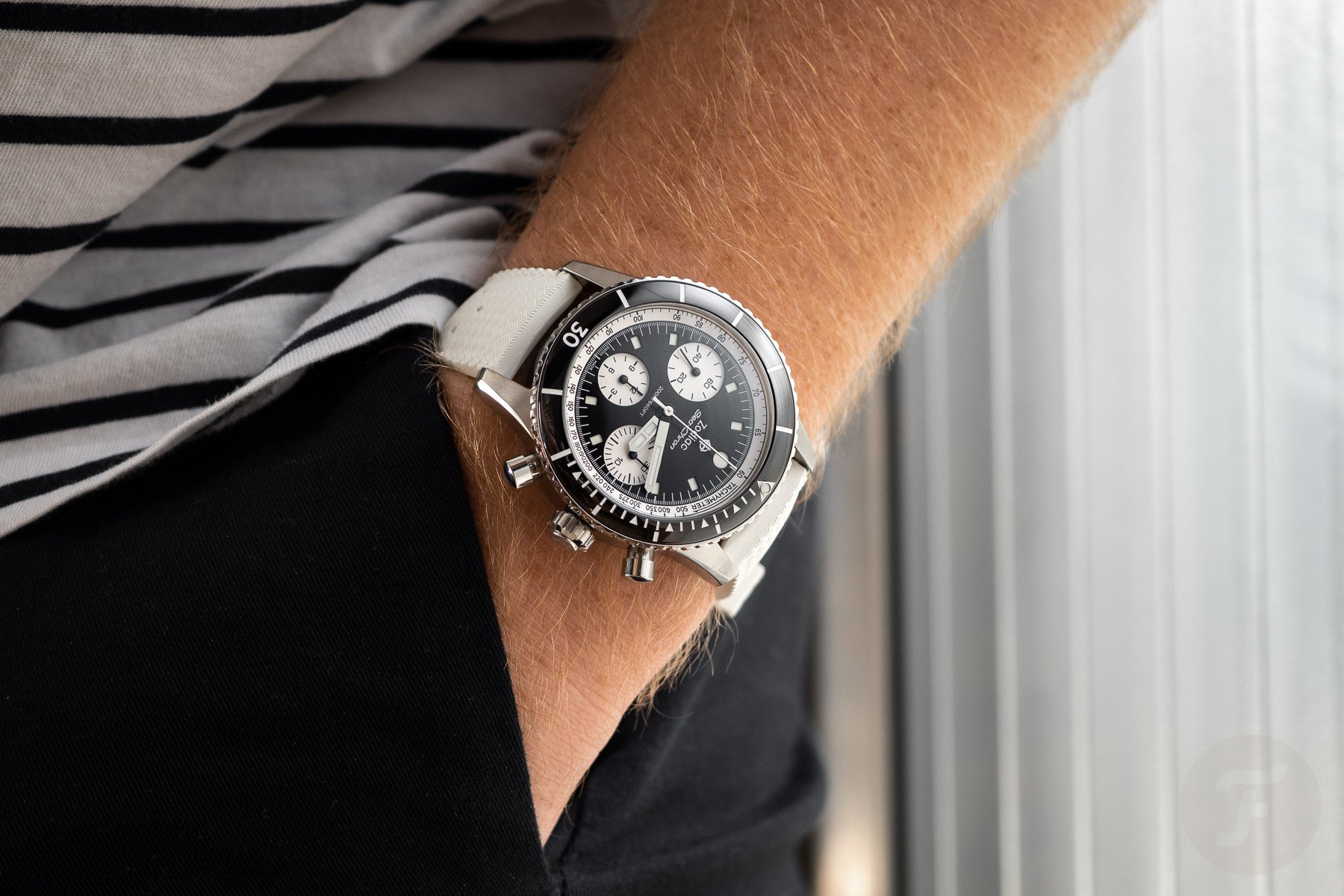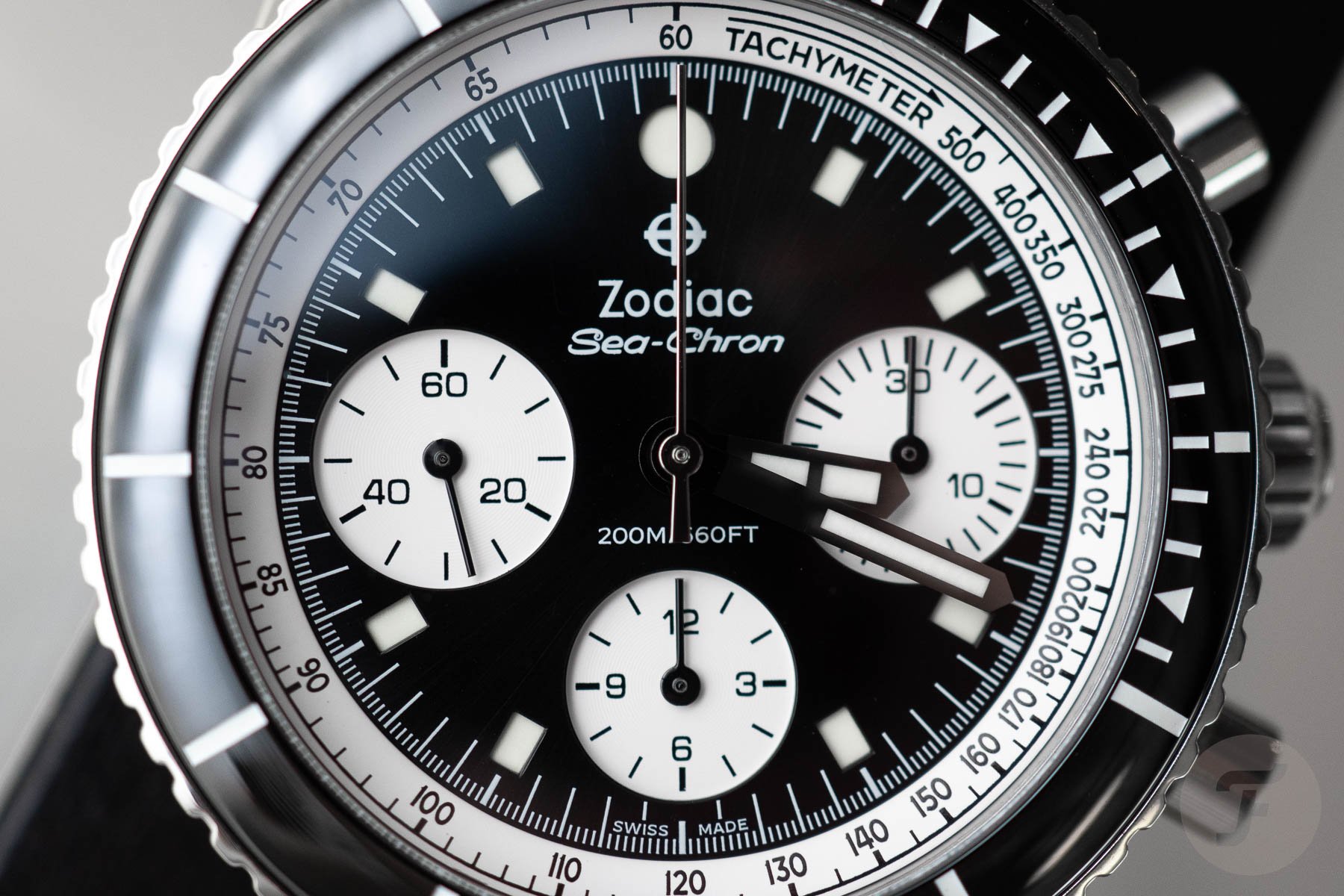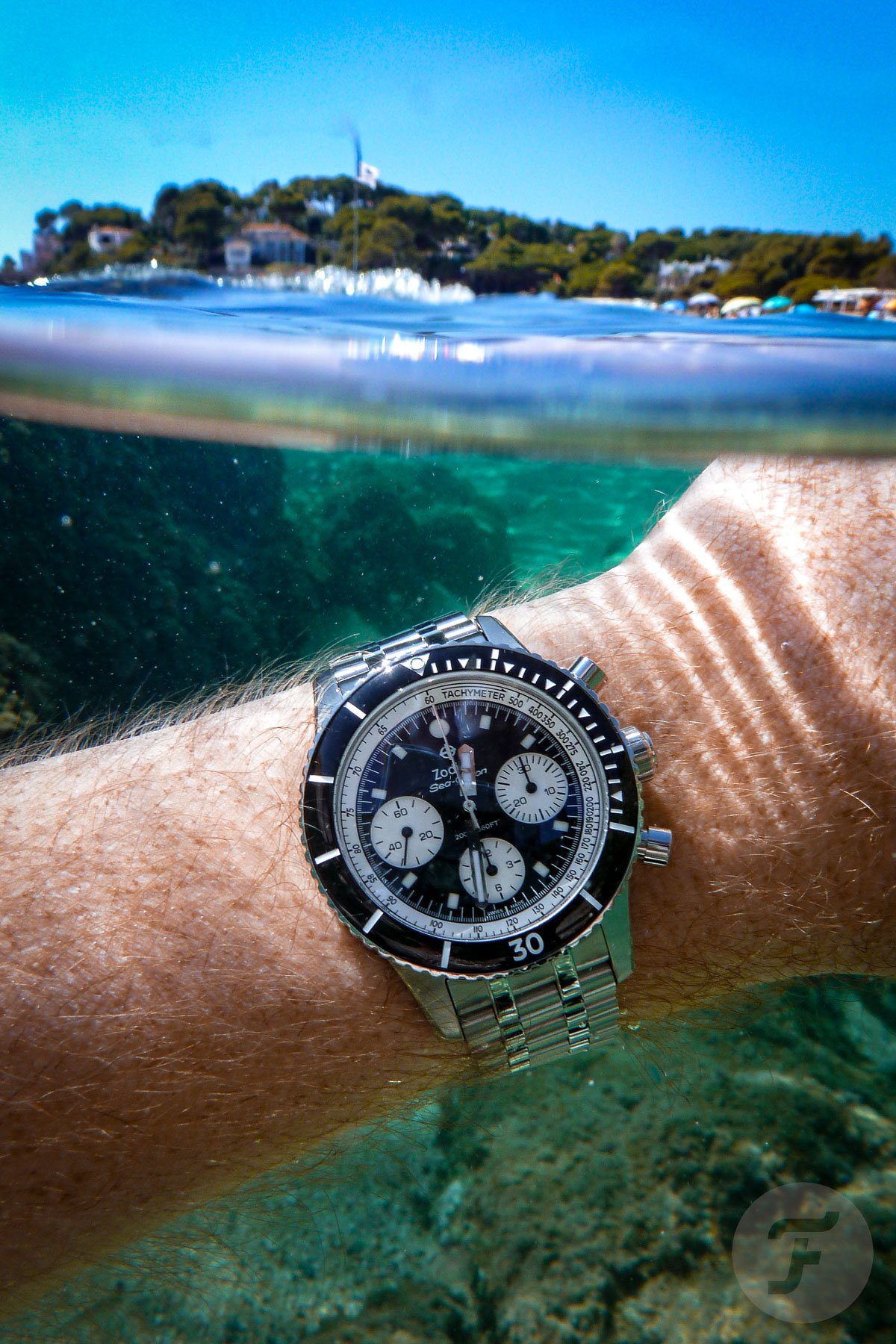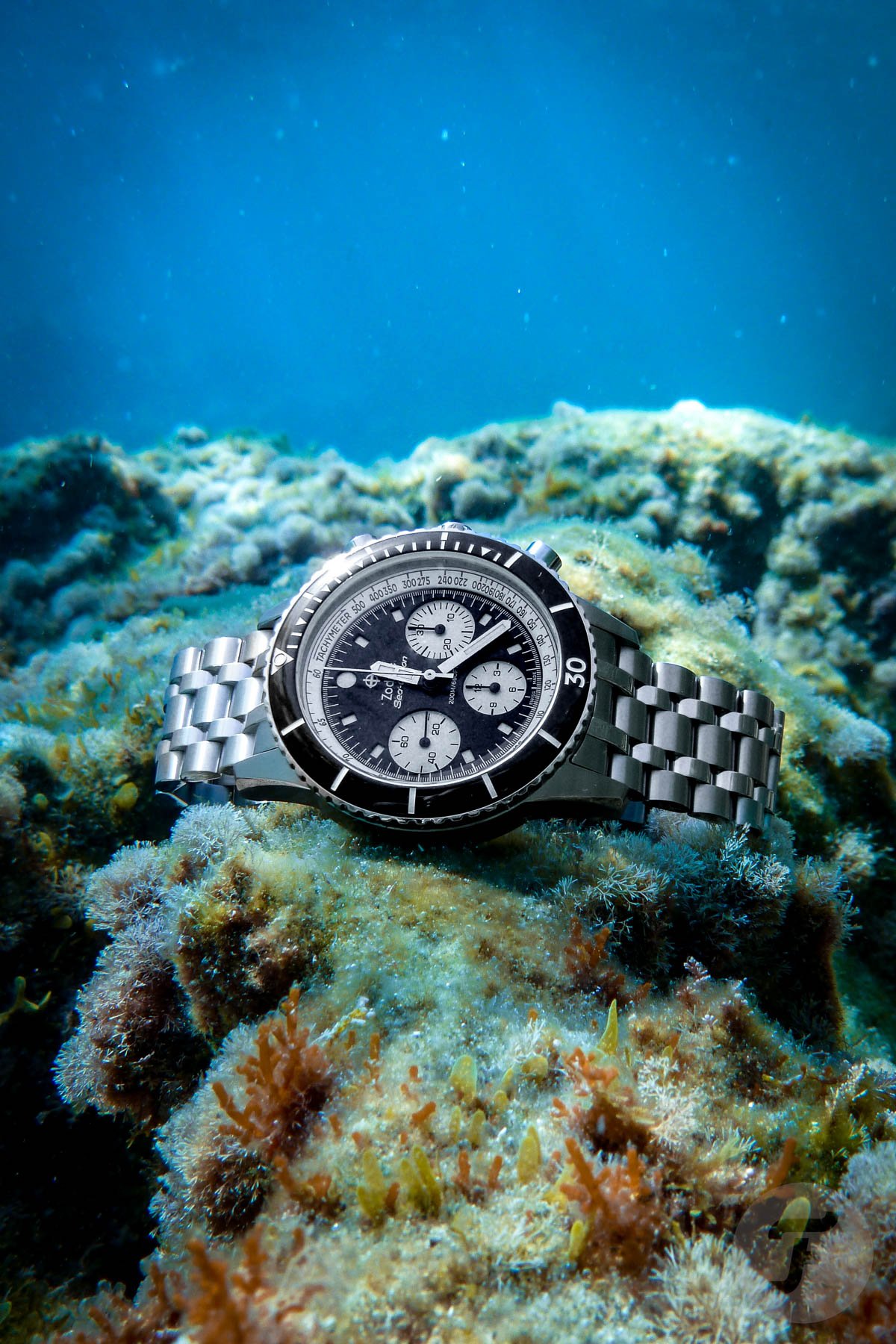Hands-On: The Zodiac Sea-Chron Gets Put Through Its Paces In The Mediterranean
This year, Zodiac celebrates 70 years of the Sea Wolf, one of the very first dive watches as we know them today. But it’s not the only thing the brand can be proud of in 2023. Expanding the range of materials that Zodiac uses in its watches was also a major touchpoint. We’ve seen ceramic, titanium, meteorite, and bronze added to the range. Currently, a complete revamp of the Super Sea Wolf line is in the books, with new models arriving every month. Last but not least, the revival of the Sea-Chron can also be bookmarked as pretty significant. This was the move Zodiac made this year that stood out most to me.
Suppose you’ve been reading Fratello for a long while now; you might remember Mike’s 2016 article on the original Zodiac Sea-Chron. Perhaps you only remember my introduction article from earlier this year (in which I also referred to Mike’s piece on the OG). I was a happy camper already back then, though I kept my enthusiasm cautiously in check. This was due to the Sea-Chron’s reported 16.5mm thickness, a chunky number, certainly on paper. But how was it in the metal? Well, before I give the game away, let’s jump on a plane to northeastern Spain and the warm waters of the Mediterranean. This is where I put this dive chronograph through its paces. Unlike the (even chunkier) Crafter Blue Hyperion Ocean Chronograph I reviewed on dry land, this one got wet. But was it the perfect summertime companion I hoped it would be?
The Zodiac Sea-Chron — First impressions
Straight out of the box, I was too impatient to size the bracelet. So, wanting to wear the watch immediately, I opted for a white Tropic-style strap from the Fratello Shop. The first thing that stood out to me was that despite its generous 42 × 16.5 × 50.5mm proportions, the watch felt balanced. Whereas other chunky watches tend to feel top-heavy, the Zodiac Sea-Chron does not. It seems to wear most of its weight on the domed case back, which sits nicely on my flat 17.5cm wrist. Breaking down the side profile, you see the contrast of the polished bezel edge (3.5mm), vertically brushed case band (6.5mm), and recessed case back (4.5mm). The rest of the thickness (2mm) can be attributed to the ceramic bezel insert and slightly domed sapphire crystal. All that is to say, the watch is certainly not slim, but it wears its beefiness better than most.
Just before my holiday in Catalonia, I finally sized up the bracelet. The five-row links include two small tubes that hold the pins in place. They were about as fiddly as you’d expect but not overly stressful. With a few links taken out of either side, the fit was perfect. Though I’m not normally fond of dual-deployant clasps on dive watches (I prefer a single-deployant clasp with micro-adjust), the one Zodiac uses has a pretty neat trick up its sleeve. Both sides boast a spring-loaded expansion system. It’s already comfortable on a regular day. But on a scorching day, trekking to a secluded cove, it’s brilliant. I did pack the tropic along with the watch, but during my time in Spain, the Sea-Chron did not come off the bracelet, a testament to its comfort. Surprisingly, a NATO strap was my least favorite of the three options that I tested.
Black and white done right
As you know, the Zodiac Sea-Chron is currently available in two colors. I opted for the black and white dial over the petrol blue with black sub-dials. Something about the reverse panda dial felt a bit more classic, especially with the white rehaut featuring a tachymeter scale. Inspired by the original piece from the ’60s, the Sea-Chron brings a new level of detail to a formula that worked over half a century ago. The sandwich dial construction is nicely executed, creating depth, especially in direct sunlight. The sunburst finish of the central dial is subtle, comparable to that on the Tudor Pelagos 39. In most lighting, it remains a deep black. Catch the light at just the right angle, though, and different gray tones will take over the dial. My only gripe on the dial side? The hour and minute hands.
Thanks to the white lume, you can spot them, but at most angles, they blend into the dark backdrop of the dial. Perhaps if they were less flat and had more of a curve to them, they’d catch the light a little better. They also seem to have a slightly darker, almost gunmetal finish to them. Would I have appreciated some additional contrast? Sure. But it’s definitely not a dealbreaker. Another element that was pleasantly surprising in real life was the lume. Coming into the Air BnB after a day on the beach, the lume would glow bright blue on the dial, hands, and bezel. The crown is big and grippy, and the pushers are snappy and responsive. Finally, the bezel action was brilliant. It was tight, precise, and without a hint of backplay or misalignment.
The Zodiac Sea-Chron dive chronograph in its natural habitat
We don’t always get the chance to test watches to the fullest. Wearing one for a week before going into the office is one thing, but when you’re talking about a racing chronograph (for example), the Seat Ibiza doesn’t cut it. But sometimes brands lend a hand — for example, when Thomas had the bright red Porsche to match the Chronograph 1 or when I took a Tudor FXD down 20 meters to a retired US Navy hovercraft. When it comes to a ’60s-inspired dive chronograph, standing near a canal or using water-misted dive gear is one thing. Still, it doesn’t entirely replace taking the watch for a spot of skin diving. There’s a higher risk of jellyfish stings and sunburn, but it must be done. Underwater, the watch performed well. As you would expect from a modern 200m-water-resistant watch, there was no humidity ingress to report.
One thing I did not dare to do was to operate the pushers underwater, especially at depth. It’s not that I don’t trust the gaskets, but Zodiac doesn’t specify that the pushers are rated for underwater use. Now, wait! I can already hear you typing, “What’s the point of a diving chronograph that you can’t use underwater?” That is a fair question. Granted, it would be preferable to have the option of operating it underwater (as an additional timing instrument for bottom time or decompression). However, you could always start the timer before descending on your dive and pause it when you come back up to the surface, timing bottom time with the bezel and using the chronograph to track the elapsed time of the entire dive. But just as you can use the bezel to time a pizza in the oven, the chronograph can also be useful when not diving.
Final thoughts
So, was the Zodiac Sea-Chron a worthy companion for warm days by the coast? I’d say so. It was even a good watch to wear on the rainy October day taking place outside as I’m writing this. Its vintage vibes coupled with having spent my childhood summers in the same slice of the Costa Brava that I visited this year made me rather nostalgic. I couldn’t help but notice the overwhelming number of naked wrists or even those wearing some sort of fitness tracker or smartwatch. But as I wrapped up shooting the watch, I crossed paths with a fellow watch wearer. A local spear fisherman, also stepping from the sea, emerged victorious with the catch of the day in hand. Above said hand was an old dive watch with a faded bezel on a black rubber strap.
Though my catch consisted of the pixels I presented to you today, we were united by the mechanical timekeepers we wore while enjoying a day in the sea. Embracing the romance and appeal of analog over modern convenience can be just the ticket sometimes. Otherwise, you might as well use your smartphone for timekeeping or buy your fish frozen from the supermarket (both perfectly valid practices). Certainly, wearing a mechanical watch is easier than spearfishing, yet it’s no less satisfying. And when it comes to picking your mechanical companion, you could certainly do a lot worse than the Zodiac Sea-Chron. Just remember to rinse it with fresh water when the day is done.
For more information on the Sea-Chron, check out the Zodiac website.

















